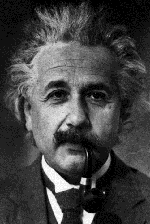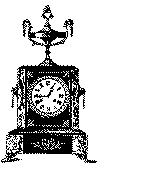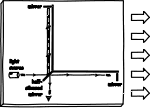|
John
D. Norton
Philosophy (and History) of Relativity, Space and Time
|
|
home >> research >> philosophy of relativity,
space and time |


|
In 1918, Einstein proclaimed that the foundations of his general
theory of relativity lay in three principles: the principle of
equivalence, the (generalized) principle of relativity and Mach's
principle. For a long time, an understanding of the foundations of
the general theory of relativity seemed to require elucidation of the
content of each of the principles. That elucidation proved elusive as
it graduatlly emerged that much of Einstein's account of the nature
of these principle did not sustain scrutiny or that Einstein's own
intensions were quite different from what the later literature
reported. I have sought to throw some light on these problems in many
studies. |
"What was Einstein's Principle of Equivalence?"
Studies in History and Philosophy of Science, 16 (1985)
, pp. 203-246; reprinted in D. Howard and J. Stachel (eds.),
Einstein and the History of General Relativity: Einstein
Studies Vol. I, Boston: Birkhauser, 1989, pp.5-47.
"Coordinates and Covariance: Einstein's View of Spacetime and the
Modern View," Foundations of Physics, 19 , pp.
1215-63.
"The Physical Content of General Covariance," in J. Eisenstaedt and
A. Kox (eds.) Studies in the History of General Relativity:
Einstein Studies, Vol. III, Boston: Birkhäuser, 1992, pp.
281-315. Download.
"General Covariance and the Foundations of General Relativity: Eight
Decades of Dispute," Reports on Progress in Physics, 56
(1993) , pp.791-858. Download.
"Why Geometry is not Conventional," in U. Maier and h. -J. Schmidt
(eds.), Semantical Aspects of Spacetime Theories. Mannheim:
B.I. Wissenschaftsverlag, 1994. pp.159-67. Download.
"Mach's Principle before Einstein." in J. Barbour and H. Pfister,
eds., Mach's Principle: From Newton's Bucket to Quantum Gravity:
Einstein Studies, Vol. 6. Boston: Birkhäuser, 1995,
pp.9-57.Reprinted with unauthorized
editorial changes to the conclusion in J. T. Blackmore, R.
Itagaki and S. Tanaka, Ernst Mach's
Science: Its Character and Influence on Einstein and Others.
Kanagawa, Japan: Tokai University Press, 2006, pp. 193-229. Please
consult the original Einstein
Studies edition for the authoritative text. Download.
"Did Einstein Stumble: The Debate over General Covariance,"
Erkenntnis, 42 (1995) , pp.223-245; volume reprinted as
Reflections on Spacetime: Foundations, Philosophy, History. U.
Maier and H,-J Schmidt (eds.), Dordrecht: Kluwer, 1995. Download.
"Geometries in Collision: Einstein, Klein and Riemann." in J. Gray,
ed., The Symbolic Universe. Oxford University Press, 1999,
pp.128-144. Download.
"Einstein's Triumph over the Spacetime Coordinate System: A Paper
Presented in Honor of Roberto Torretti," Dialogos, 79
(2002), pp. 253-62. Preprint
available on philsci-archive.
"General Covariance, Gauge Theories and the Kretschmann Objection,"
to appear in Katherine Brading and Elena Castellani (eds.)
Symmetries in Physics: Philosophical Reflections. Cambridge
University Press. Preprint
available on philsci-archive
|
 |
Here is an opinionated assessment of what we can learn about the
ontology of space and time from the special and general theories of
relativity. It uses the requirements of novelty, modesty, realism and
robustness to distinguish these morals from those that have been
incorrectly drawn. We learn from Einstein's theories of novel
entanglements of categories once held distinct: space with time;
space and time with matter; and space and time with causality. We do
not learn that all is relative, that time in the fourth dimension in
any non-trivial sense, that coordinate systems and even geometry are
conventional or that spacetime should be reduced ontologically to
causal, spatio-temporal or other relations.
|
“What Can We Learn about the Ontology of Space and Time from the Theory of Relativity?” L. Sklar (ed.), Physical Theory: Method and Interpretation, Oxford University Press, 2015. pp. 185-228. Download.
See also my "Introduction to the Philosophy of Space and Time," in M.
H. Salmon et al., Introduction to the Philosophy of
Science. Prentice-Hall, 1992; reprinted Hackett, 1999. Download. |
 |
Einstein turned out to deliver unexpected insights into the nature
of space and time through an argument he introduced in 1913 to
explain away his failure to deliver the expected version of general
relativity. Over sixty years later John Stachel showed the overlooked
profundity of this "hole argument." John Earman and I reformulated
the argument as a fatal dilemma for an extreme form of realism about
spacetime, spacetime substantivalism. |
with J. Earman, "What Price Spacetime
Substantivalism? The Hole Story," British Journal for the
Philosophy of Science, 38 (1987) , pp. 515-25. Download.
"Einstein, the Hole Argument and the Reality of Space," in J. Forge
(ed.), Measurement, Realism and Objectivity (Reidel), (1987),
pp. 153-188.
"The Hole Argument," PSA 1988. Proceedings of the 1988 Biennial
Meeting of the Philosophy of Science Association, Volume 2, pp.
56-64. Reprinted in J. Butterfield, M. Hogarth and G. Belot,
Spacetime: The International Research Library of Philosophy,
17. Aldershot: Dartmouth, 1996, pp. 285-93. Download.
"The
Hole Argument," Stanford Encyclopedia of Philosophy
|
|
One of the unexpected by-products of Seeliger's paradox of
Newtonian cosmology (see above) is that it provides the best argument
yet for why we must associate gravity with a curvature of spacetime,
even in the case of Newtonian physics... |
"The Force of Newtonian Cosmology: Acceleration is
Relative" Philosophy of Science, 62, pp.511-22. Download.
|
 |
...and the story can be told in ways you might not expect. |
"The n-Stein Family" A. Ashtekar et al. (eds.)
Revisiting the Foundations of Relativistic Physics: Festschrift in
Honor of John Stachel. Kluwer. Kluwer, 2003. pp. 55-67. Download
|
 |
Constructivists, such as Harvey Brown, must believe that the
geometry of spacetime can be inferred from the properties of matter
without recourse to spatiotemporal presumptions. I show that the
construction project only succeeds if constructivists antecedently
presume the essential commitments of a realist conception of
spacetime. |
"Why Constructive Relativity Fails,"British Journal
for the Philosophy of Science, 59 (2008), pp. 821-834. Download. |
 |
In the burning fuse model of unbecoming in time, the future is real and the past is unreal. It is used to motivate the idea that there is something unbecoming in the present literature on the metaphysics of time: its focus is merely the assigning of a label “real.” |
"The Burning Fuse Model of Unbecoming in Time," Studies in History and Philosophy of Modern Physics. Forthcoming. Download. |

|
Adding a conical singularity to a Minkowski spacetime produces a temporally non-orientable spacetime that is everywhere flat excepting in regions enclosing the singularity. Time travel arises in the sense that a traveler, passing the singularity, is returned to the traveler's past where the traveler encounters the traveler's past self. |
"A Simple Minkowskian Time-Travel Spacetime," American Journal of Physics Vol.93, Issue 3 (2025), pp. 241–249. Download. |

|
Einstein's hole argument, as adapted to more recent philosophy of science, provides a physically motivated guide for deciding which elements of a theory represent distinct realities in the world. Two theoretical structures do not represent different realities if the two do not differ in observables and if the prevailing theory cannot determine which will arise from the same boundary conditions.
|
"Spacetime is not a substance," IAI News, 9th March, 2025. Institute of Arts and Ideas, Hay-on-Wye, Wales, UK. Download.
|
|
|








